Designing cities for the future
Our society is facing three important challenges: growing income inequality, sustainability and health concerns due to climate change, and the accelerating effects of the digital revolution, which threatens to erode the way we work and relate to one another. Meanwhile, more people are choosing to live in urban environments. These trends highlight the importance of urban design, organizational structures, incentive schemes, economic development patterns, and knowledge networks, as areas of rapidly emerging risks and also of extraordinary opportunities.
Inequality rates are greater than ever before. In the 18th century, the wealthiest nation in the world per capita, the Netherlands, was 4 times more prosperous than the poorest country in the world. At the beginning of the XXI Century, the wealthiest countries are now 200 times wealthier per capita than the poorest. This dramatic shift of wealth from the hands of many to the hands of the few has reduced the proper planning of resources to help support life of mankind as informal settlements grow. International migrations are on the rise, eventually inducing social and political distress, as people search for new opportunities to survive. Without proper living environments, people will lack the structure on which to build their lives, their economies, and their futures.
Thoughtful design of our urban environments is paramount as we foster and shape our relationship with the natural world around us and create healthy sustainable spaces. As the built environment accounts for more than 30% of the total energy use of the planet, it is critical that we address how to best organize our urban systems to decrease total energy consumption, create walkable and livable neighborhoods, and increase access to desirable amenities and employment opportunities.
Moreover, today’s urban design decisions will shape the future of work and the economic vitality of our cities. We can expect today’s jobs to change dramatically with the introduction of cognitive automation by means of artificial intelligence, robotics, and data-driven decision support systems. While these new tools offer many opportunities to help us solve complex problems, they must also be designed and distributed in a way that does not exacerbate the already-severe income inequality between the rich and the poor. Future prosperity will depend on increasing education among the entire population, as well as upskilling and reskilling traditional workers to ease the transition into the digital economy. It will take conscious effort to prevent large sections of our society from being left behind as the world moves ever faster toward digital solutions.
A roadmap for Barcelona
Thus, for the Barcelona Metropolitan Region to be well-equipped to successfully tackle the societal challenges of the 21st Century, in terms of high quality employment opportunities, decreasing unemployment rates, generating distributed prosperity, and providing a societal response to the job disruption caused by the emergence of AI, robotics, and automation, in a context of increasingly tight global economic competitiveness, the Barcelona Metropolitan Region needs to develop an advanced understanding of its strengths and weaknesses, risks and opportunities, to be prepared to make the best decisions, and support a citizen-centric economy, able to create economic development opportunities and reduce social vulnerability.
The present study aims to describe the current state of current and up-and-coming innovation districts and industry clusters in the Barcelona Metropolitan Region, present benchmark metrics with respect to best cases in the industry, and preliminarily define policies, programmes, and pathways to distributed prosperity.
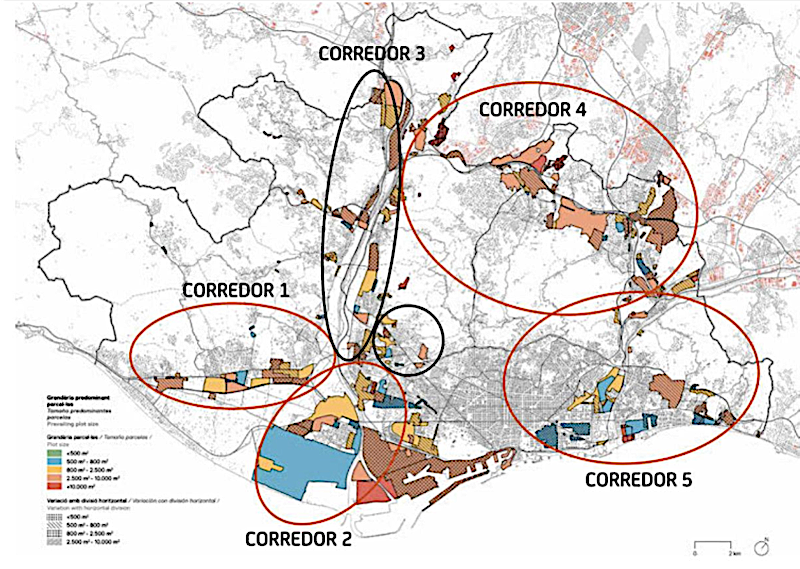
Targeting Innovation Districts
An Innovation District is a specific geographic location, generally within cities, where high concentrations of people work in advanced industries in conjunction with other related companies and institutions. They also provide a mix of attractive amenities, housing options, and public spaces to give back to the community. In total, Innovation Districts enable greater collaboration, job opportunities, and regional competitiveness through their concentrated activities to unleash the latent potential for knowledge-intensive activities and respond to multiple societal problems.
Given their ability to generate high quality employment opportunities, we observe a trend in many large or mid-scale metropolitan areas to build the most successful Innovation Districts in order to create the most welcoming and supportive environment to attract talented people, enable them to thrive, offer them healthy living environments, while boosting the positive impact that these concentrated, knowledge intensive activities can bring to communities.
Previous literature has failed to create insightful results when attempting to describe local and regional innovation activities. Without granular data, and new methods of information segmentation, it is not possible to create new metrics capable of highlighting business and industry innovation intensity, performance, and impact for the broader society. In order to describe the complex nature of social organization, ARETIAN has created new models that help to break the complex problem into smaller pieces at different scales and timeframes and describe innovation activities of four and a half million people focusing on smaller subgroups that can be further studied, analyzed, and compared to one another. Through the following ARETIAN framework, preliminary results and insights of the Metropolitan Barcelona Regional Area’s innovation economy are presented with guides for how to support their further design and development.
The Atlas of Innovation Districts
The first version of the Atlas of Innovation Districts describes the network of knowledge in the United States, emphasizing the contribution of Innovation Districts as key drivers for high quality employment opportunity creation. Subsequent versions of the Atlas will incorporate Europe, Asia, Latin America, Africa and the Middle East, and Oceania to complete the picture of the Atlas of Global Innovation.
By analyzing the 50 most well known Innovation Districts in the United States, we developed the first ever proprietary database, analytics engine, fundamental metrics, and visualizations to describe knowledge-intensive urban ecosystems in their complexity. As a consequence of creating this model, the team has also illuminated hundreds more, which were previously unknown or not considered to be an Innovation District.
From the model, it is clear that innovating is hard, but it definitely pays off: currently Innovation Districts host slightly more than 3 million jobs, of which nearly 998k (32%) have an innovation-related component, as compared to an average business neighbourhood, where only 17% of employees have knowledge-intensive jobs.
On a per resident basis, Innovation Districts host 9 times more employees, accommodate 15 times more innovation-related jobs, and generate 20 times more wealth than average neighbourhoods. Innovation Districts tend to be dramatically denser than the national average: they concentrate 26 times more density of jobs per square mile.
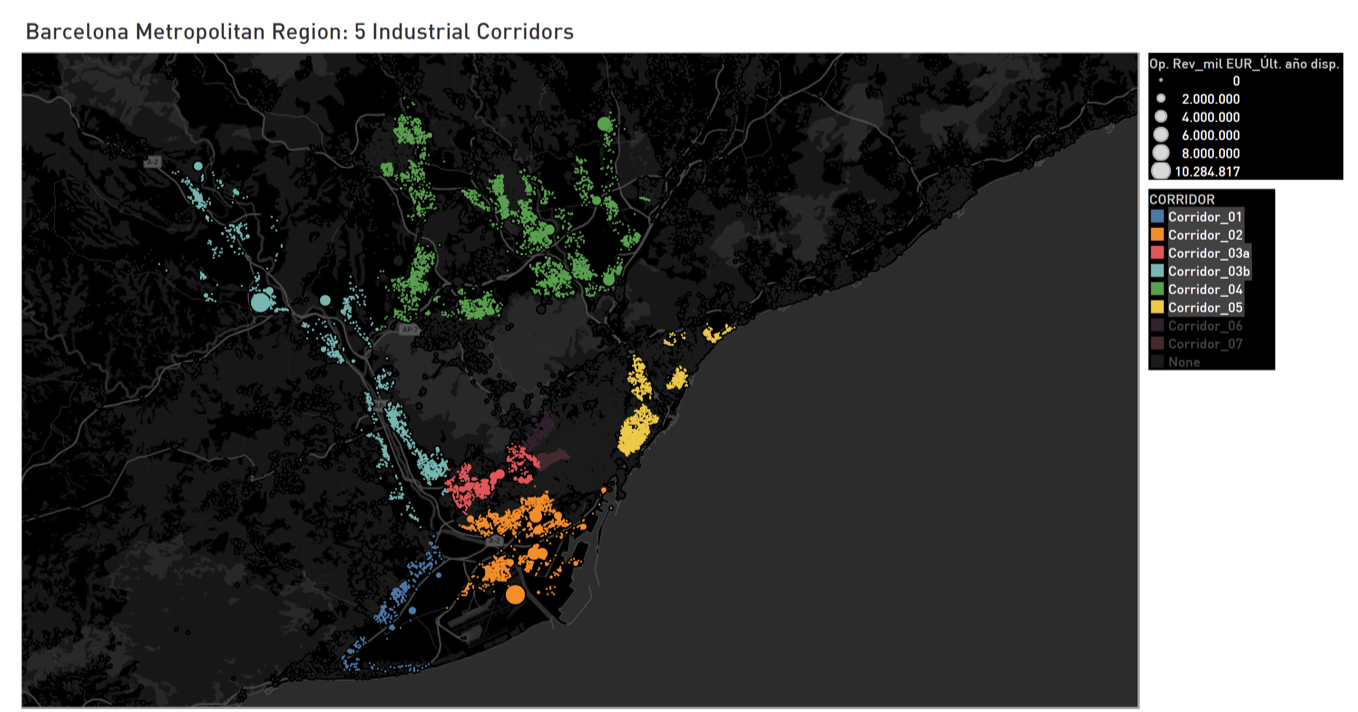
There are 25 innovation districts and industry clusters operating in the Barcelona Metropolitan Region. Each district was identified through tagging and clustering analysis based on their geographic proximity, industry relatedness, organizational affinity, and technology compatibility.
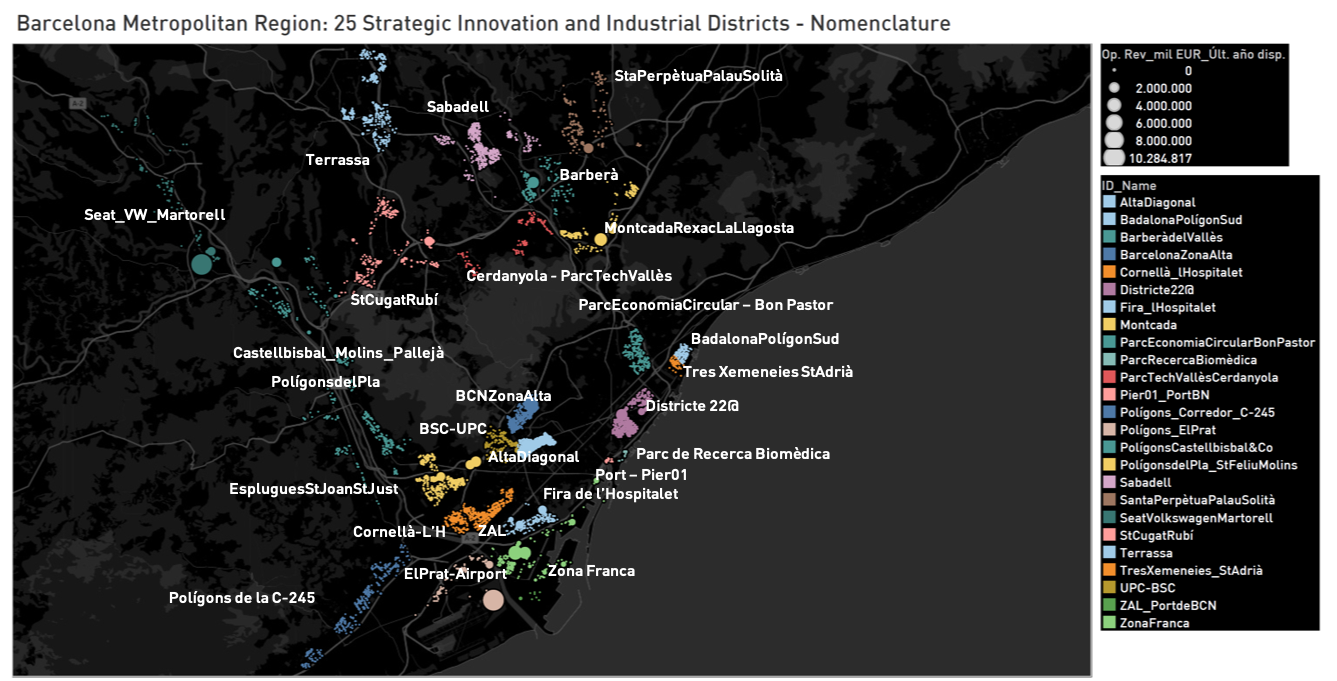
The industrial cluster is the dominant typology with 19 clusters in the region, followed by four non-consolidated Research-led innovation districts, all of which are hosted in the City of Barcelona. There were only singular cases of the City Government-led innovation district, (22@), non-consolidated Strategic Governmental Agency-led (Parc Tecnològic del Vallès / Sincrotró Alba), and an early stage Entrepreneurial Hub (Pier01).
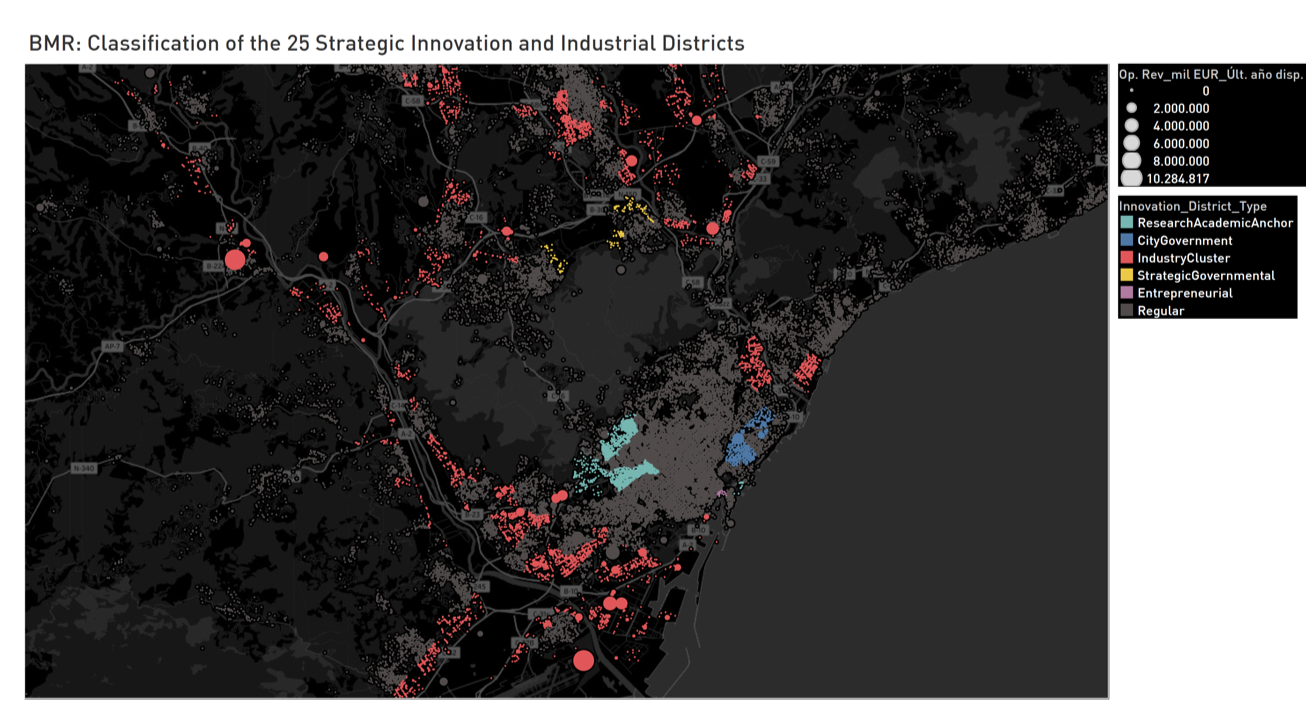
The comparisons between the innovation districts in the Barcelona Metropolitan Region and the Top 50 Innovation Districts in the US reveal that the Barcelona Metropolitan Region has had remarkable success in consolidating the City Government-led 22@ Innovation District in less than two decades, because it has a much higher innovation intensity (44.85%) than its counterparts in the US, such as Boston Seaport (21.54%), Seattle South Lake (25.45%), or Saint Louis Cortex (22.4%). However, the 22@ is the single case of a consolidated City Government-led innovation district in the Barcelona Metropolitan Area in terms of both critical mass, innovation intensity and societal benefits. The 22@, however, falls short of its potential impact to the greater metropolitan area as it was designed around 5 unique industry-specific clusters, rather than those present in the regional cities around Barcelona. This lack of a strong relationship with the traditional export-driven products that support a majority of the economy in the region, limits the potential positive societal impact of 22@ beyond the boundaries of the Poblenou neighbourhood.
The trade hub of Catalonia
ARETIAN has developed a mobility and export flow map for Catalonia, using Complexity Analysis and Network Theory. The pioneering study analyzes the state of the economy and exports in Catalonia, focusing on the levels of innovation by firms, the flow of products across different means of transport (air, water, road and railway) and the flow hierarchy according to network theory. The result of the analysis offers a new perspective of catalan exports and its interconnections, which allows for precise forecasts to optimize opportunities and minimize risks.
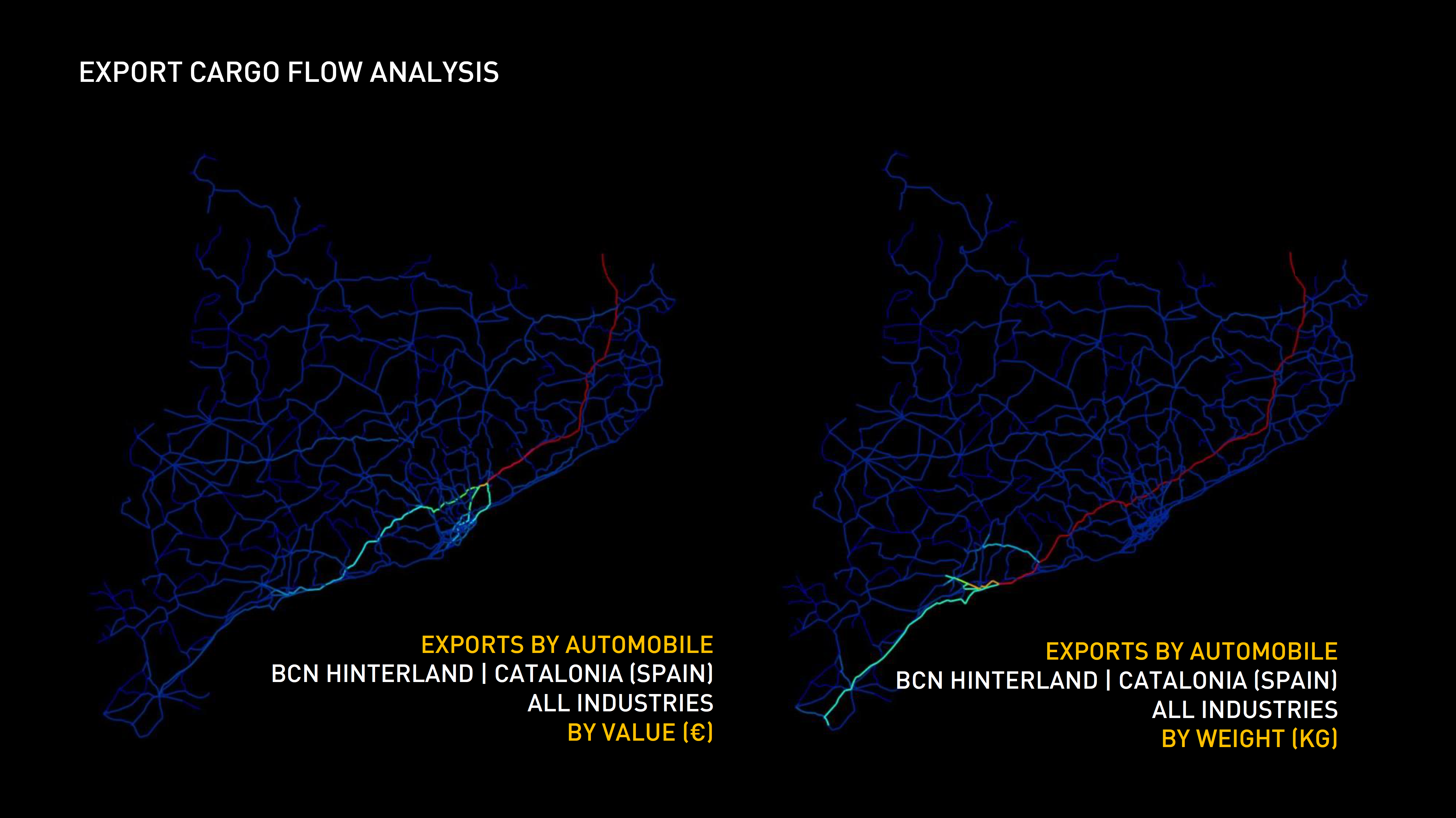
Catalan exports have tripled in value between 1995 and 2015. However, the influence of the Barcelona hinterland as an intermodal hub for trade is still limited to the Metropolitan Region of Barcelona. This evolution is in stark contrast with the great potential of the region to become the capital of a continental region that extends from Lyon and Torino to Alicante, traversing Toulouse, Valencia and Zaragoza.
In order to achieve its full potential, Catalonia has to adjust its strategy to boost the economy in the seven subregions: Barcelona, Corona Metropolitana, Regió Metropolitana, Camp de Tarragona - Penedès, Catalonia Central - Pirineus, Girona - Costa Brava and Plana de Lleida - Terres de l'Ebre.
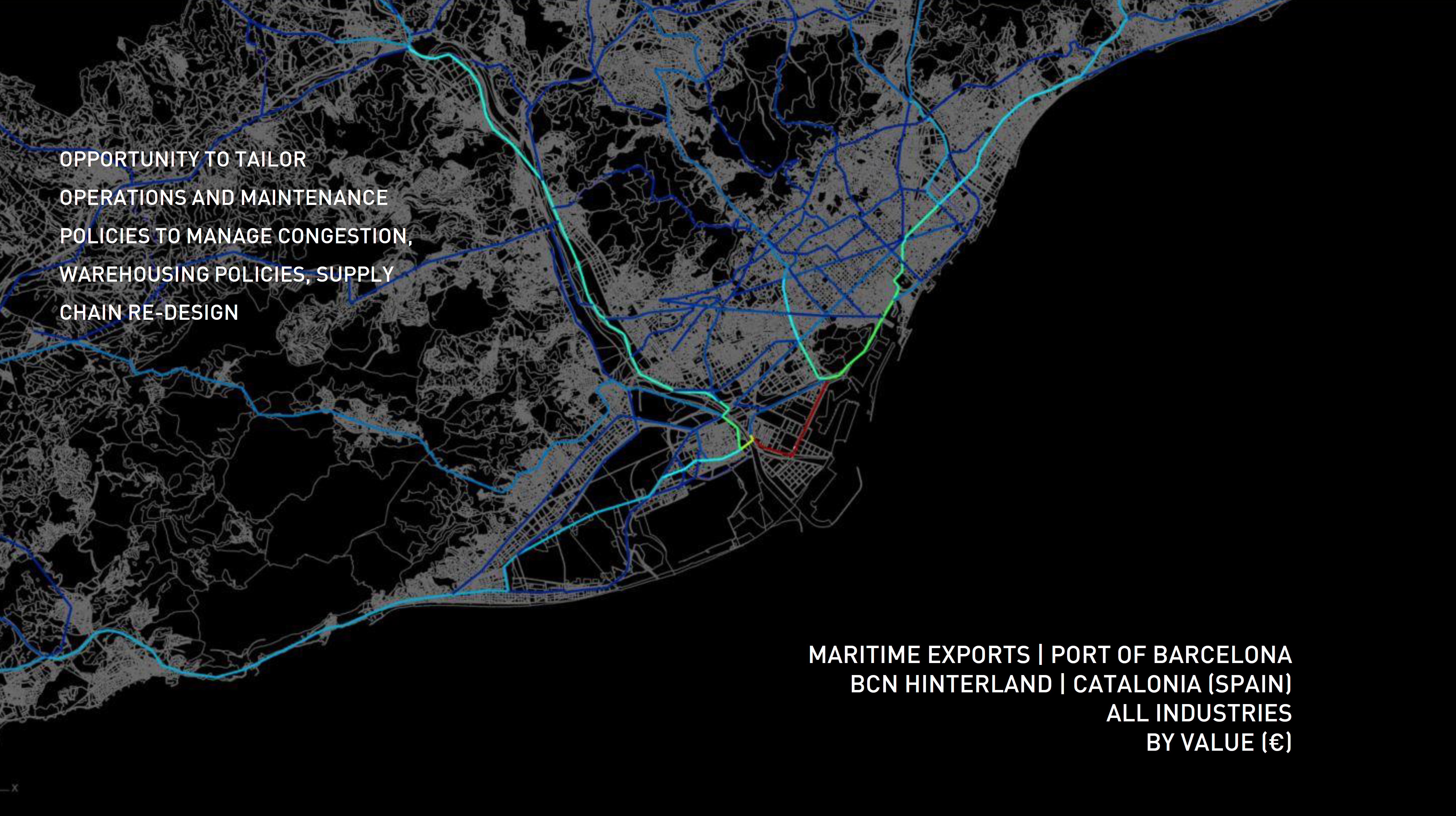
Mediterranean Railway Corridor
Currently, catalan exports by rail amount to 3% of total exports, compared to 27% of the median european levels. ARETIAN's analysis estimates that the development of a Mediterranean Railway Corridor in Catalonia could encompass 46% of catalan exports or 65% of those completed by road. The railway flow could increase upwards of 16 times compared to the current levels, avoiding the circulation of 5000 trucks per day. This would imply a massive reduction in CO2 emissions. As a result, the initial investment would be recovered in five years.
The clustering analysis reveals that the type of products that are exported by road and are likely to being exported through the Mediterranean Railway Corridor are, in order of relevance: cars and automobile components, chemical and pharmaceutical products, plastic derivatives, agricultural products, textile products, metal and manufacturing products, industrial machinery, wood and carpentry products and precision instruments. The study has identified four main nodes to locate the future intermodal connectivity stations: Tarragona, with an Industrial Petrochemical and Renewable Energy Complex; the Dic Sud of the Port of Barcelona, with an industrial terminal of high value added; the Metropolitan Railway Hub of Llobregat; and the Agrifood Terminal of Penedes.
Catalonia concentrates 25% of all Spanish exports, making it the export motor of Spain, and exports have been growing in the past years. However, in per capita terms Catalonia has lower export levels than other European countries. Moreover, the main market for catalan exports is Europe, with 68% of the total Catalan exports. The main transport mode is road, with 69% of the total, followed by a 22% by sea through the ports of Barcelona and Tarragona.
The port of Barcelona has a great potential to transform into the main port of the Mediterranean due to its geographic position and the economic and industrial structure of the hinterland. Moreover, it has been recognized in recent years as one of the most innovative in terms of its mechanisms of internal efficiency and optimization. However, according to ARETIAN's analysis, there is still ample room for improvement and opportunity to be the leader in the transport of goods in the Mediterranean.
Catalonia at the crossroads
The analysis of innovation intensity reveals that the Barcelona Metropolitan Region is dominated by the third phase of urban innovation: advanced mass production. The Research and Academia as well as the Technology Transfer phases are remarkably weaker than their counterparts in the US, therefore, there is ample room to deploy specific policies, investment prioritization, academic programmes, and urban development opportunities to support and strengthen both research-oriented innovations and technology transfer processes.
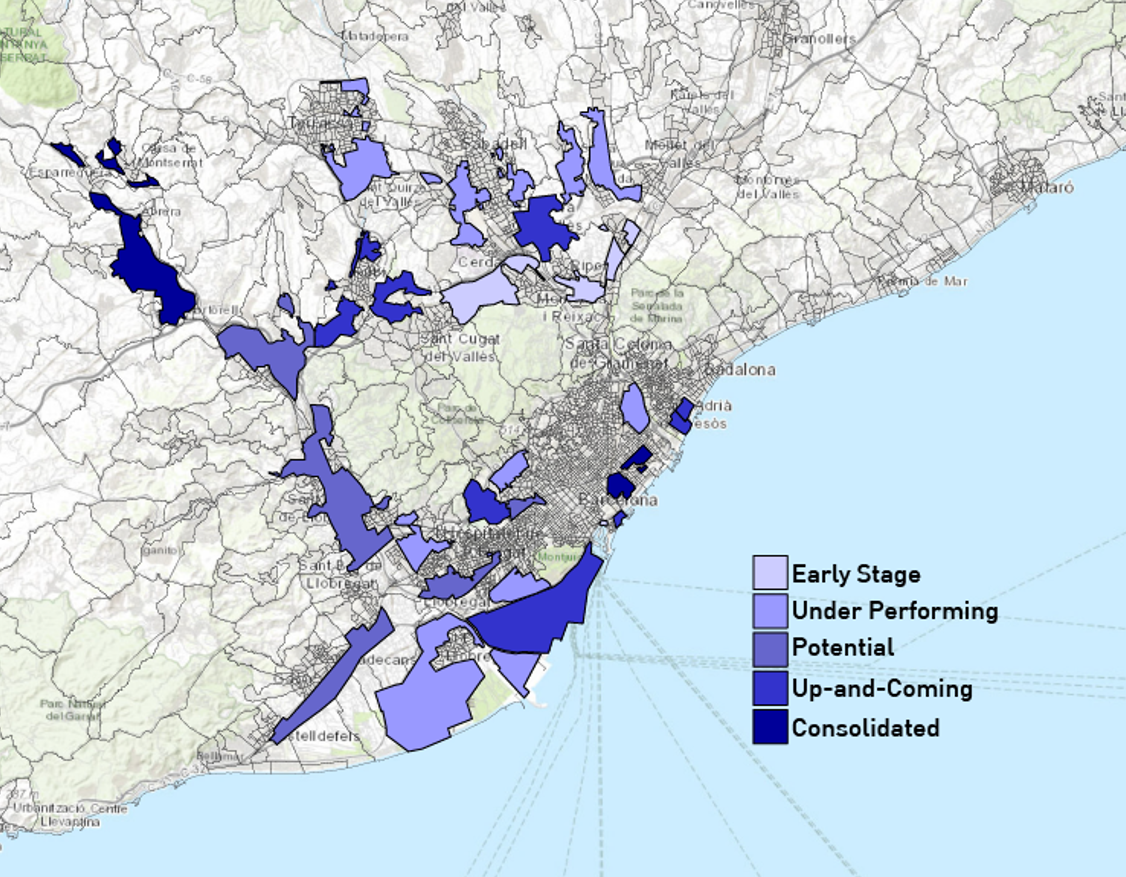
There is an emerging Research “boomerang” conformed by 3 potential innovation districts: BSC-UPC, AltaDiagonal, and BarcelonaZonaAlta. A number of the most demanding Catalan and Spanish Universities are located in this stripe, yet their compounded innovation intensity rates are rather low (19%) compared to their American counterparts (39%). Such metrics reveal plenty of room for academic programmes, technology transfer platforms, and initiatives to be implemented to liberate the latent innovation forces within the community.
Finally, ARETIAN's study concludes that the Port of Barcelona can significantly increase its potential after embarking in infrastructure and operational investment. From all the shipments to Asia from Catalonia, 35% is accomplished through other ports like Rotterdam, Antwerp, Hamburg and Bremen. In addition, the negative trade balance with China threatens to undermine the competitiveness of the Catalan industry in the medium run.
Improvements in infrastructure would allow for an improvement in the logistic system of the Port of Barcelona and its hinterland, resulting in increased exports of Catalan firms to China and the rest of Asia. Some of the measures needed involve investment in port access and industrial docks to add value to goods imported from the Asian market, improvements in the processing of shipments, investment in the railway system to the rest of the european market and intensifying private invesments with public support to increase exports to Asia.
Research and Design by ARETIAN
© Copyright 2019 - Aretian Urban Analytics and Design